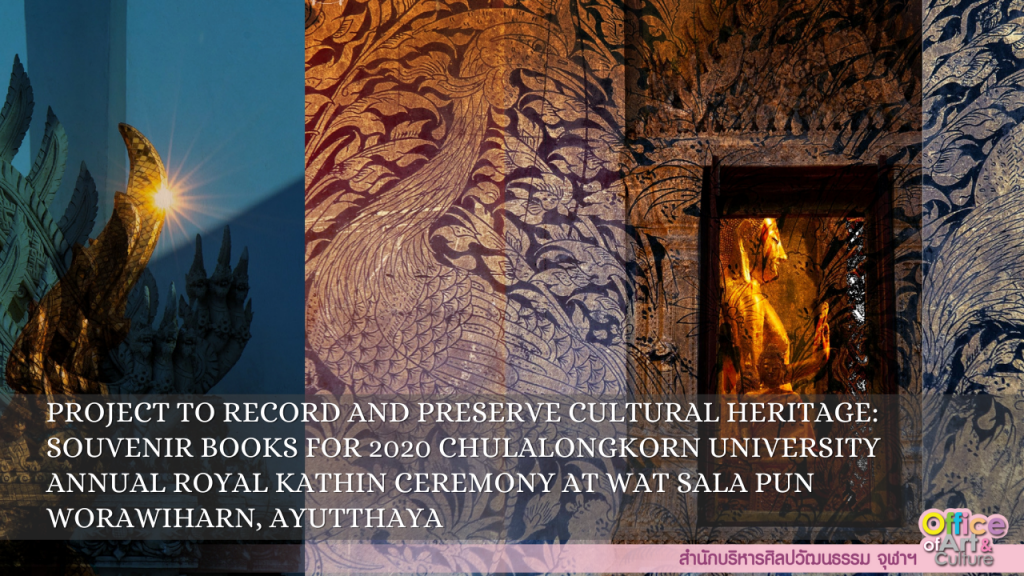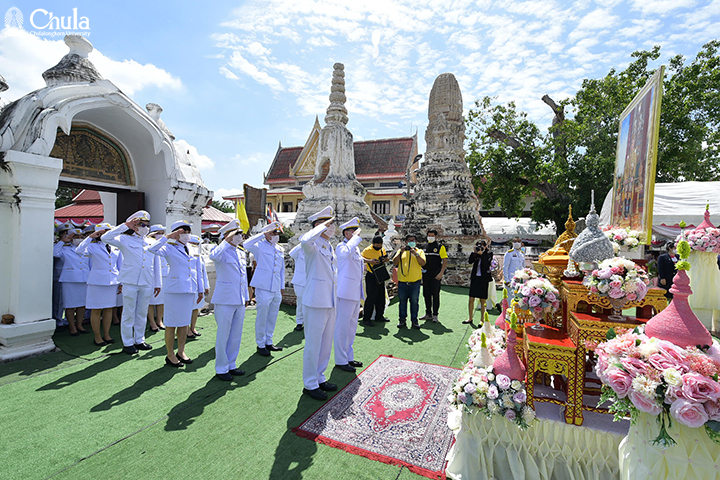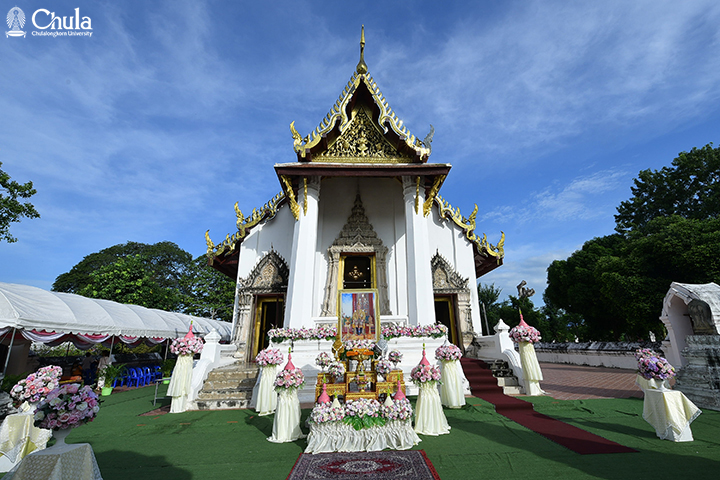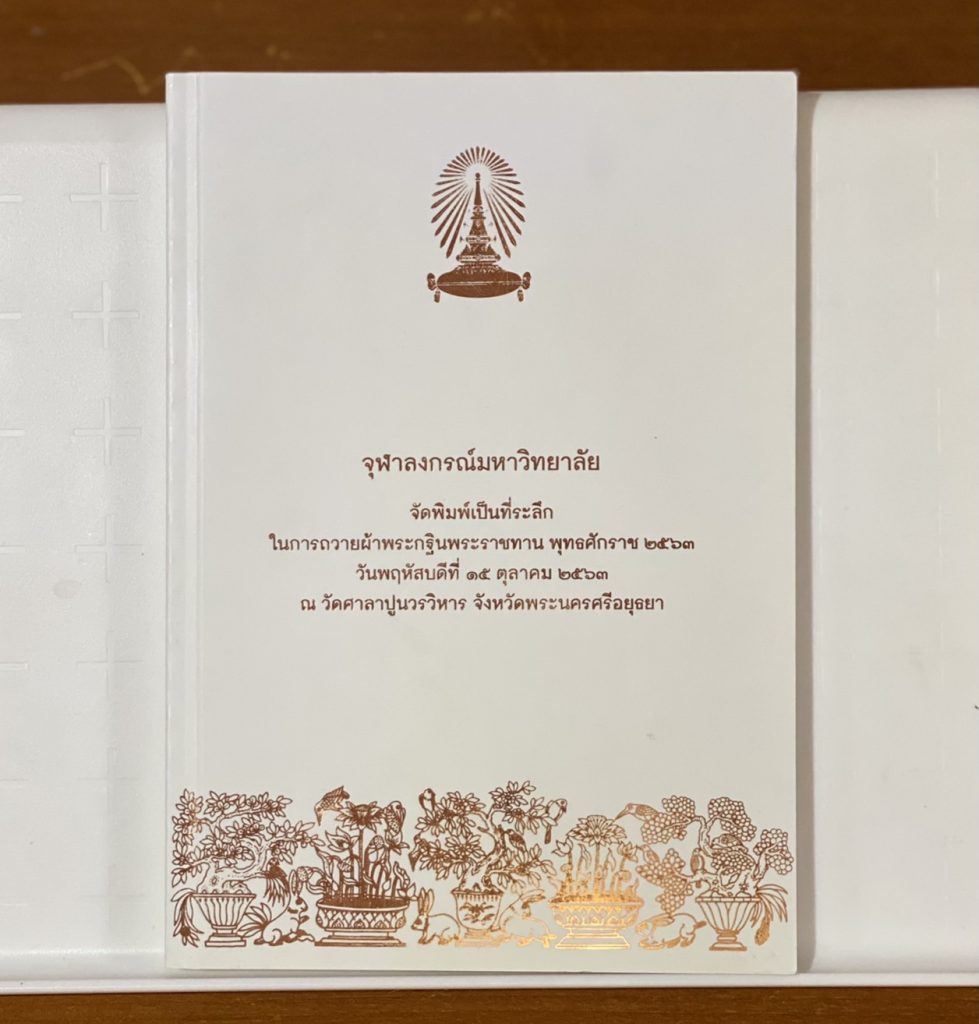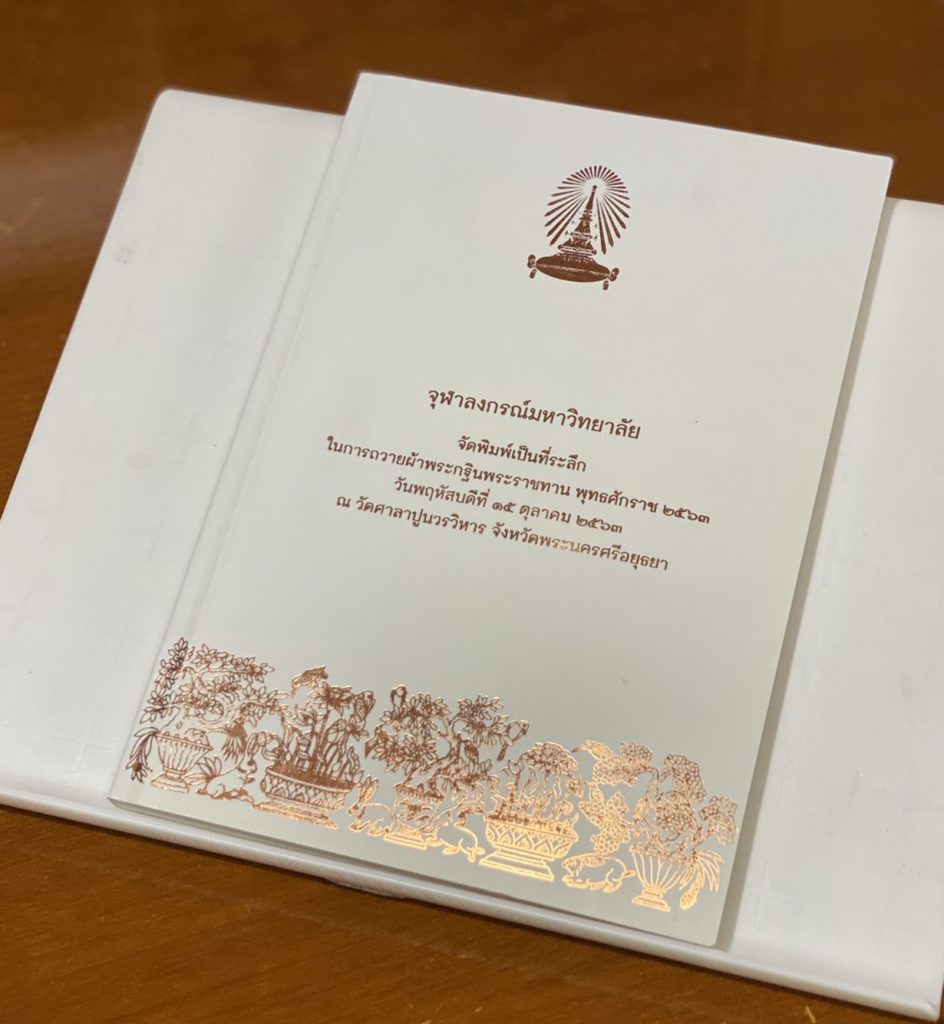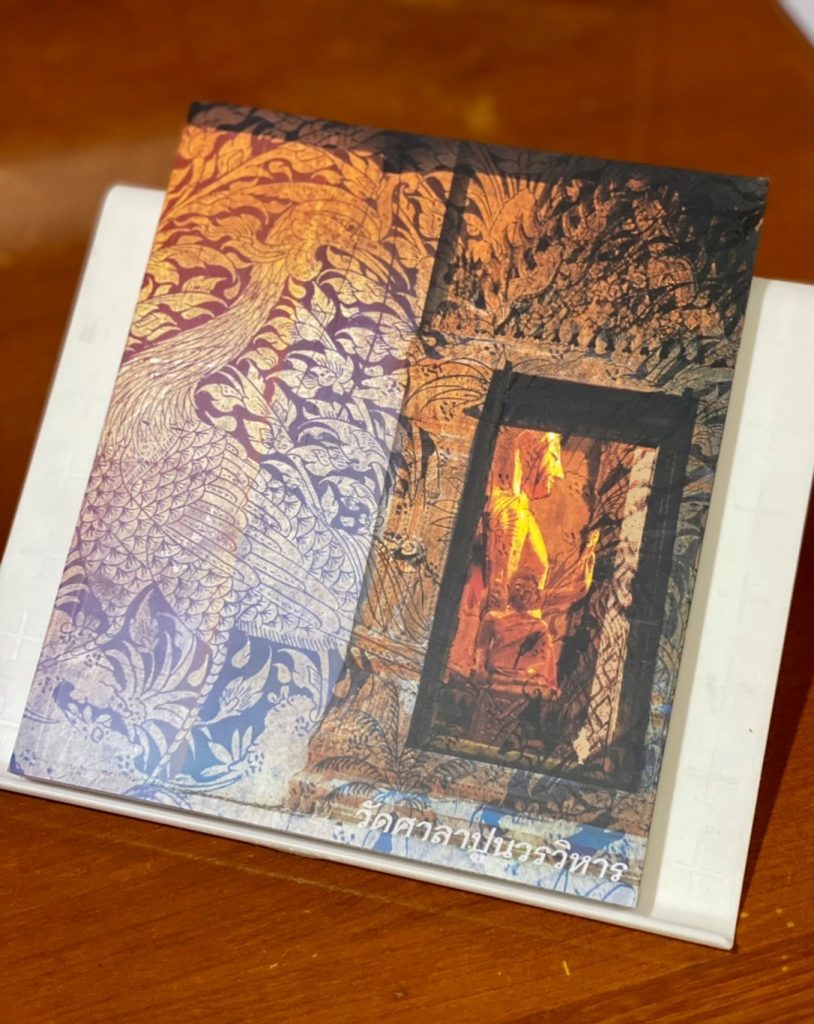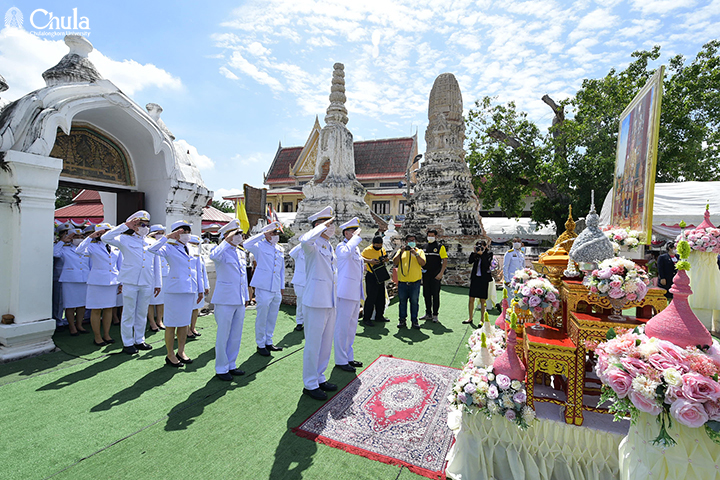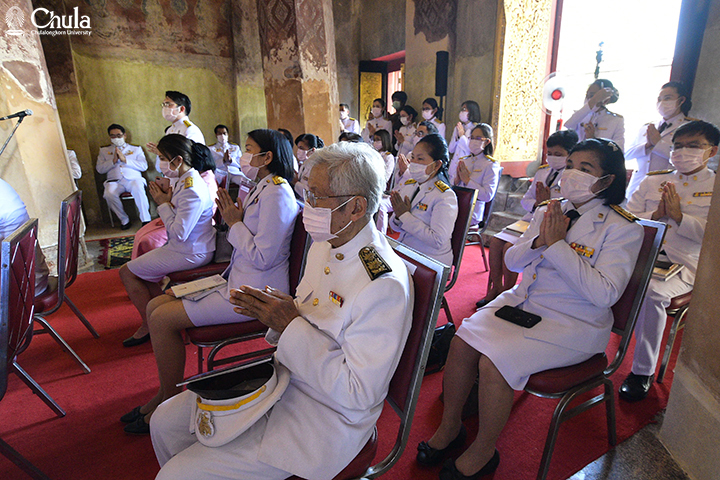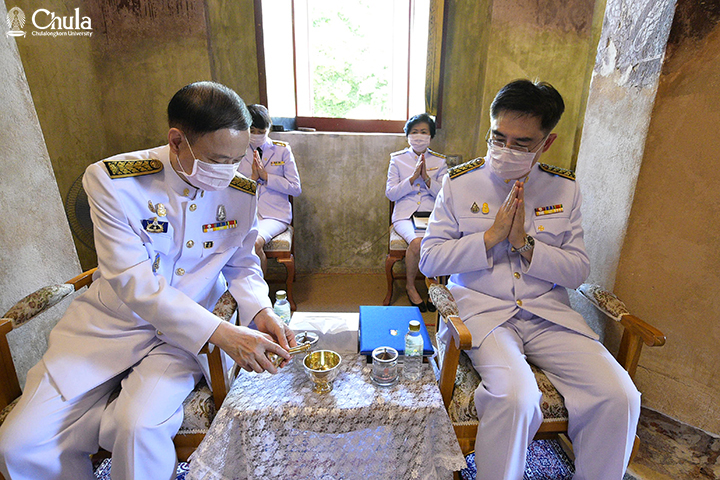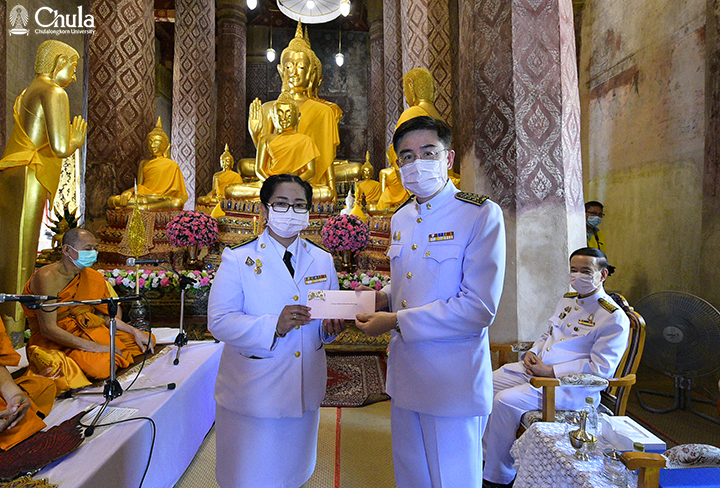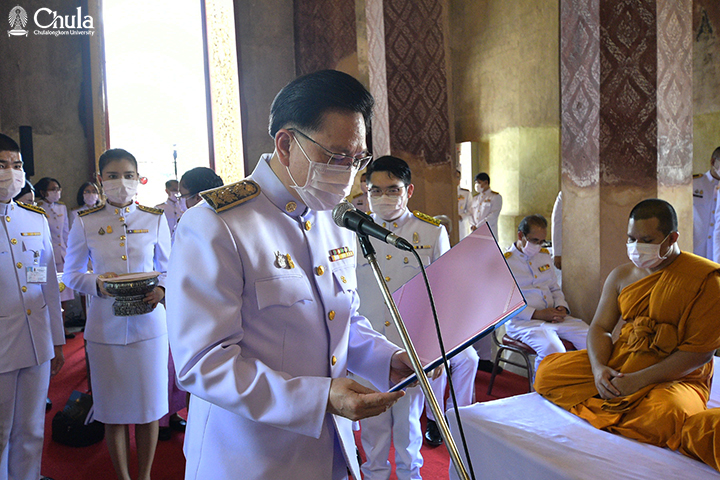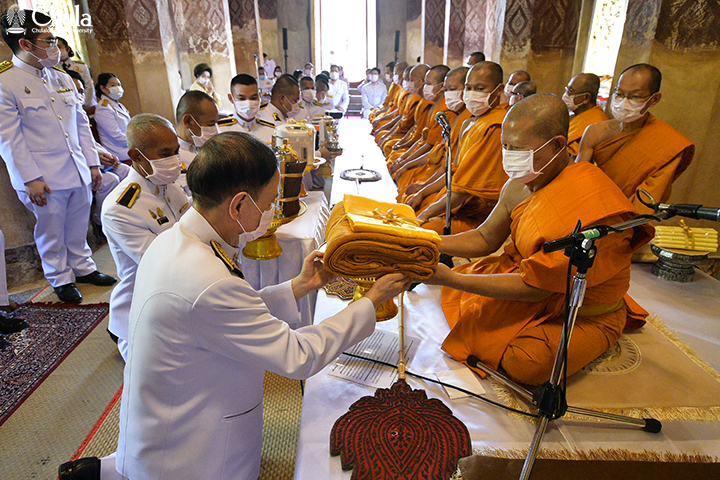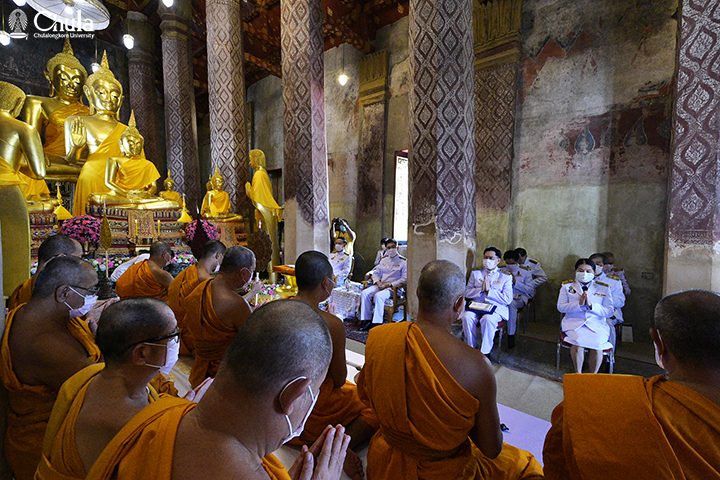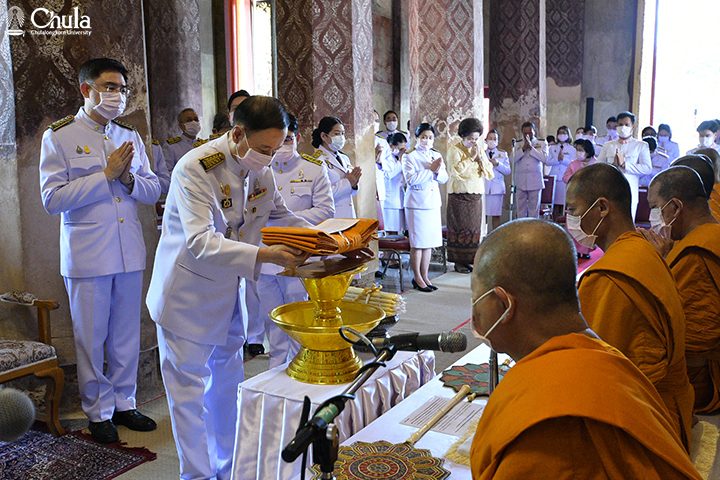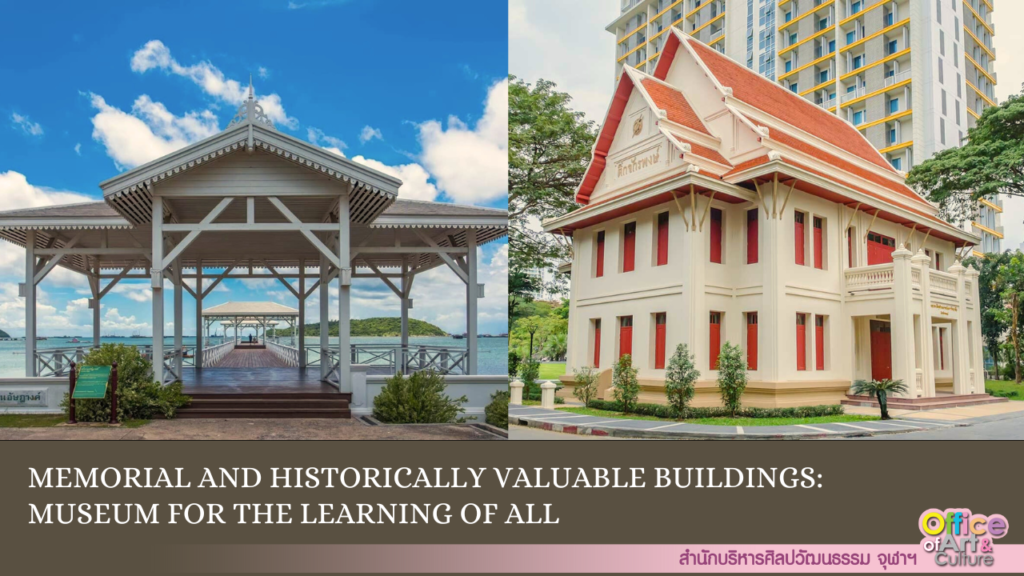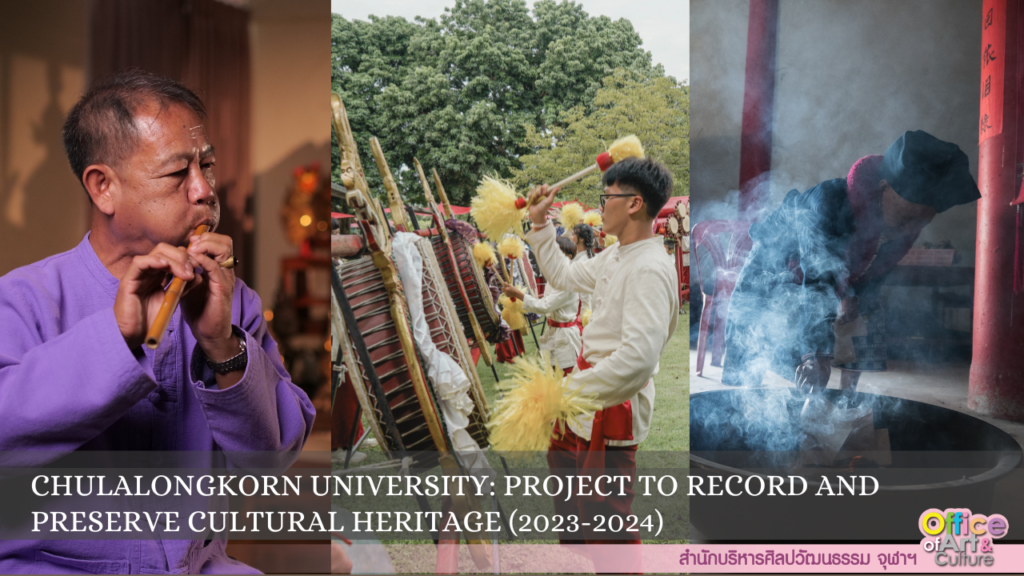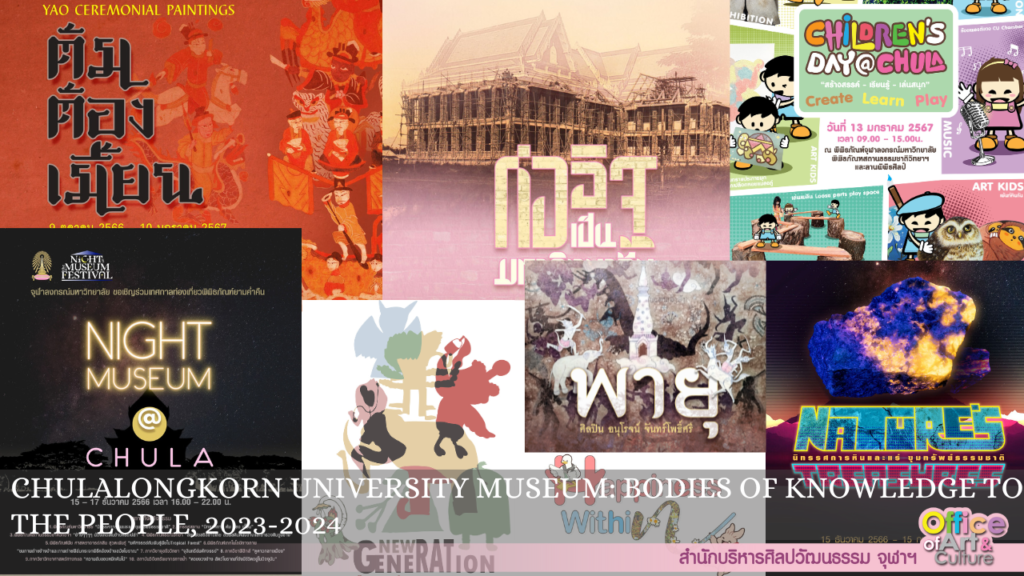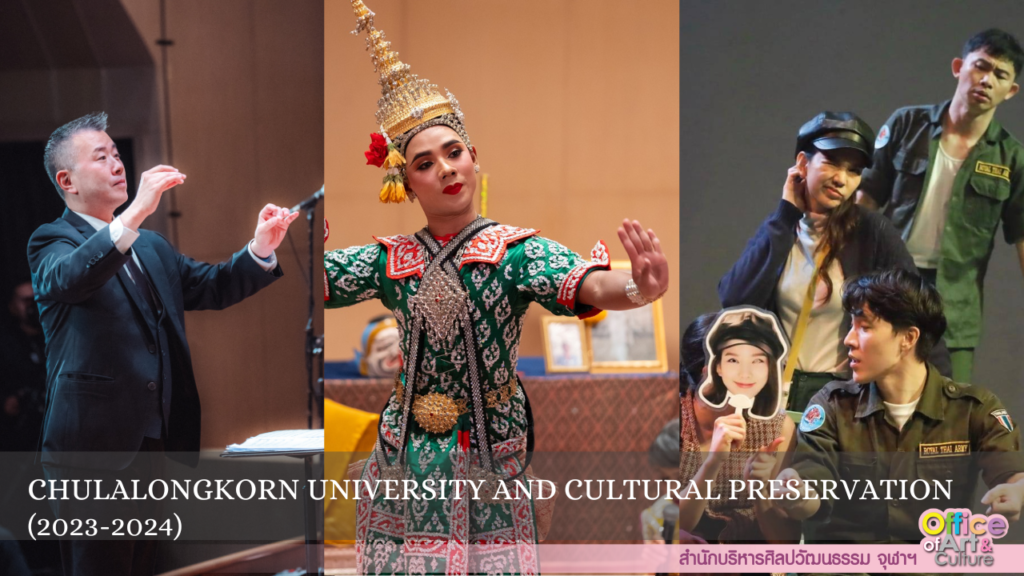Recording and preserving Thailand’s cultural heritage has always been one of the major focuses of the university. Series of projects have been carried out to serve this purpose. One of the many rewarding projects in 2020 was executed in conjunction with the university’s organization of Royal Kathin Ceremony at Wat Sala Pun Worawihan, a royal temple in Ayutthaya. This historic and important temple is believed to have been built when Ayutthaya was the capital of Thailand during the reign of King Narai the Great (1632-1688 A.D.) and has been extensively restored.
The Royal Kathin Ceremony is the most important religious ceremony organized annually by Chulalongkorn University after the end of Buddhist Lent, in which all high-ranking university administrators partake. The ceremony is a monetary merit-making and religious gift-giving event, in which donation money is given to the temple for maintenance, and monks are given gifts of new saffron robes and other items necessary for their monastery lives. In the university’s Royal Kathin Ceremony, royal robes are given by the King through the university to pass on to the monks in a selected temple of the year, and donation money for merit-making is given by people in the university community. In 2020 Royal Kathin Ceremony, donation money of 1,242,070 baht (US$41,402) was raised and given to the Wat Sala Pun Worawihan temple and its temple school.
As the Office of Art and Culture has its regular role in the Royal Kathin Ceremony in producing souvenir books every year, in 2020 the Office, in collaboration with the university’s Center of Central Administration, and Center for Visual Studies, Faculty of Architecture, published two souvenir books as part of its mission to record invaluable information and body of knowledge, and preserve architectural, Buddhist art, and historic heritages. These souvenir books are:
(1) A small, 170-page, A5-sized, paperback souvenir books contain information on the history of Wat Sala Pun Worawihan temple and stories behind Buddhist art found in the temple, for instance, the chapel, pagodas, murals, and other art pieces. The information is presented as both facts and analysis by Associate Professor Dr. Jeerawan Sangpetch, as exert in Buddhist art, Faulty of Fine and Applied Arts, Chulalongkorn University. This souvenir book also incorporates a reprint of an old and rare book, Miscellaneous Explanation of Stories from Siam Chronicles, written in 1926 by Prince Damrong Rajanubhab, son of King Chulalongkorn who had contributed greatly to the modernization of Thailand during his lifetime over a hundred years ago. The book is an invaluable source of history of Thailand, in which the author gave an insight on the matters of politics, laws, and foreign affairs from the Ayutthaya Kingdom (1350-1767), during which Wat Sala Pu Worawihan temple was built. The writing style is captivating and easy to understand by general readers, which makes the book a means to disseminate knowledge on historical and cultural roots of the country.
The Royal Kathin Ceremony souvenir book was published in 1,000 copies for the attendees of the ceremony and people who are interested.
(2) A large, 135-page, A4-sized, gold-embossed, collectible-quality hardcover souvenir book with editorial board composed of experts in different areas, for instance, photography, history, Thai architecture, and design. For this reason, the souvenir book contains comprehensive information on Wat Sala Pun Worawihan temple and its surrounding community, and detailed contextual information. The book, therefore, is an invaluable addition to the records of the nation’s art and cultural heritage.
It was published in 700 copies for esteemed guests, Wat Sala Pun Worawihan temple, Ayutthaya Cultural Office, schools, and libraries.
In addition to publishing 1,700 hard copies of the two souvenir books, the university also distribute the books digitally to reach more readers who are interested in researching more into national heritage in culture, history, architecture, and Buddhist art during the Ayutthaya period.


